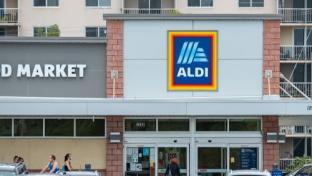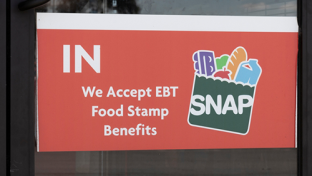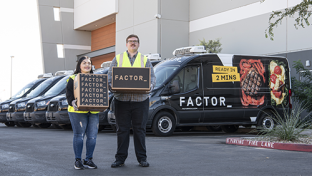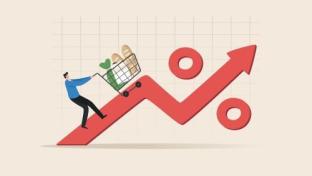Amazon Leads in Personalization: Report
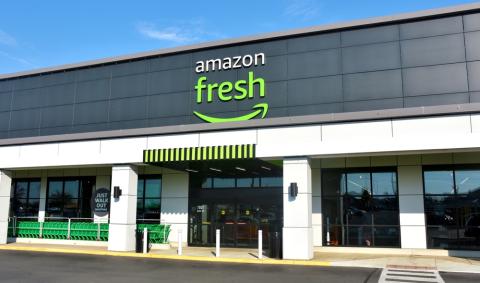
Customer data science provider dunnhumby has released a special edition of the dunnhumby Retailer Preference Index (RPI) on which retailers in the $1 trillion U.S. grocery market personalize the shopping experience best for customers. In this first ever RPI for Leadership in Personalization, Amazon came first, followed by H-E-B and Kroger in second and third place. According to dunnhumby, these retailers ranked at the top because of their targeted savings, localized assortment and frictionless shopping experience.
The seven retailers with the next highest overall customer preference index scores were 4) Giant Eagle, 5) King Soopers (a Kroger banner), 6) Meijer, 7) The Giant Co., 8) Target, 9) Fry’s (a Kroger banner) and 10) Smith’s (a Kroger banner). Seventy percent of those companies in the top quartile of the Personalization RPI (PRPI) ranking were in the top quartile for targeted savings, the most important personalization driver.
[Read more: “Most Consumers Still Leery of AI: Report”]
“With the long-term trend of shoppers across all income brackets demanding lower prices, personalization is an opportunity for grocers to better retain and acquire customers,” noted Matt O’Grady, president of dunnhumby for the Americas. “The goal of this report is to help retailers improve personalization as a whole – the way customers define it. And because customers define personalization as targeted savings, local assortment and a frictionless shopping experience, understanding their preferences is key. The Personalization RPI provides a framework not only for grocery retailers looking to lead the market in personalization, but also for those who are in the earlier phases of their personalization journey who are trying to understand where to focus their resources.”
The dunnhumby RPI is the only approach to ranking grocers that combines financial results with customer perception, according to the company. The PRPI includes 65 of the largest grocery retailers in the industry, with financial and customer perception data coming from dunnhumby’s survey of 10,000 American grocery shoppers. The company’s analysts cross-validate the model with financial data from Edge by Ascential, foot traffic data from Placer.ai and web traffic data from Similarweb to ensure that grocery retailers that rank higher are driving a higher share of visits and bigger basket sizes. The PRPI model also identifies which dimensions of the personalization proposition matter most for driving financial and emotional performance by grouping 30-plus personalization levers into three main personalization preference drivers: targeted savings, frictionless experience and localized assortment.
Key findings from the study include the following:
Only Amazon, H-E-B, Target and ShopRite, which ranked in the top quartile in dunnhumby’s annual U.S. Grocery RPI in January 2023 were also in the top quartile of the PRPI. Perennial top-quartile performers Costco and ALDI, along with fast-growing hard-discounters such as dollar stores, Lidl and Grocery Outlet, are absent from the top two quartiles of the report because they don’t rely on personalization to drive growth, instead depending on geographic expansion and cost-control measures to drive scale. If their ability to expand into new markets diminishes in the future, these grocery retailers will need to look to personalization to drive growth with current customers, according to dunnhumby.
Top-quartile retailers outperformed the rest of the retailers on benefits, costs or both. For top-quartile grocery retailers, this translates to a 14% increase in shoppers with a strong emotional connection, a 41% uptick in share of wallet, a 34% rise in online visits per month per person, and a 131% increase in traffic share in a grocery retailer’s footprint versus retailers in the third and fourth quartiles.
By accepting that shoppers define what “personalization means to themselves, not the grocer,” retailers can compete with Amazon and everyday-low-price (EDLP) retailers with customer data. For grocery retailers, it’s about serving customers in accordance with their stated and implicit preferences.
Smith’s, Winn-Dixie, Kroger, Fry’s and Giant Eagle offered shoppers the best targeted savings. Forty-five percent of personalization-related grocery retailer outcomes are driven by targeted savings. Leaders in this area do two to three times better than others at rewarding shoppers, helping them save money (through a loyalty program), and making it simple for them to do so (an easy-to-understand program and point redemption).
H-E-B, Big Y, Wegmans, Food City and Schnucks offered the best localized assortment, the second most important driver of personalization. Localized assortment drives 28% of personalization-related grocery retailer outcomes. Leaders in this space perform 1.5-two times better than others at providing shoppers with the right mix of products to meet their needs, local product variety and a close connection to the local community. Localization and hyper-localization can help customers feel like a grocery retailer knows them personally.
Amazon, Target, H-E-B, CVS and Walgreens provided shoppers with the best frictionless experience, the third most important driver of personalization. A frictionless experience drives 27% of personalization-related outcomes. Amazon ranked No. 1 in this area across all retailers in 10 out of the 11 frictionless experience levers, with Target the only retailer to beat it in one respect: web and apps. Frictionless experience leaders perform roughly twice as well as others at reminding shoppers (usual items, forgotten items, previously bought items, follow-ups); providing relevant products and topics; offering digital ease; and personalizing both the online and in-store experience.
Personalization matters most to shoppers in baby care (63%) across all three drivers. Personalization is also crucial in health care (53%), and ready-to-eat items (52%) but their importance will vary by driver.
The dunnhumby Customer Data Science Platform is a unique blend of technology, software and consulting, designed to enable businesses to increase revenue and profits by delivering exceptional experiences for their customers in-store, offline and online. The London-based company employs more than 2,500 experts in offices throughout Europe, Asia, Africa and the Americas, working for such well-known brands as Tesco, Coca-Cola, Meijer, Procter & Gamble, and Raley’s.


